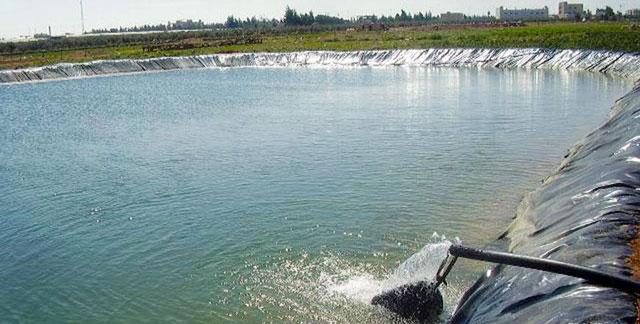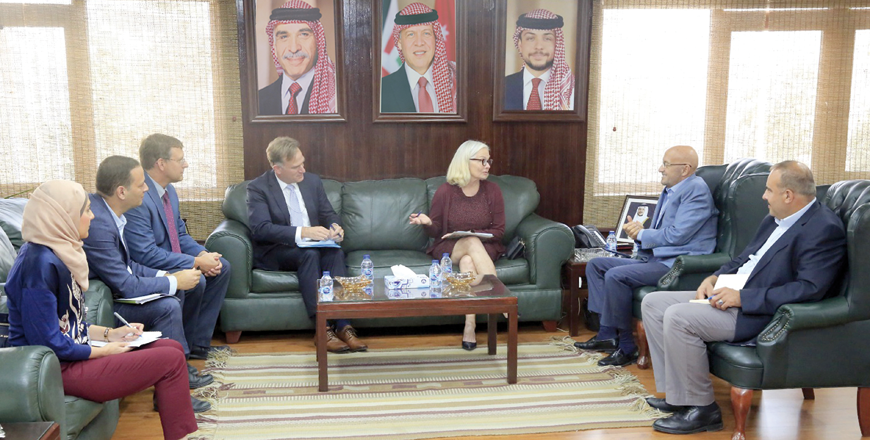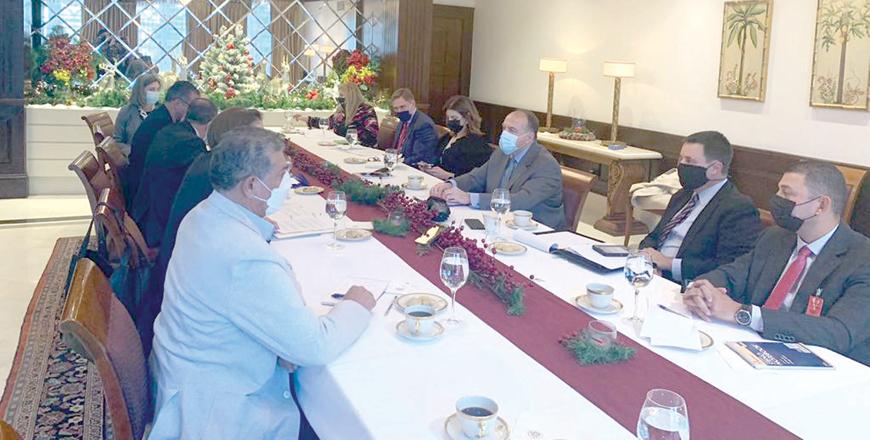You are here
USAID committed to Jordan water sector amid increases in floods, droughts — official
By Hana Namrouqa - Jul 21,2019 - Last updated at Jul 21,2019

USAID has said it is committed to working with Jordan to address water shortages and emergencies as floods and droughts increase in frequency (Photo courtesy of Water Ministry)
WASHINGTON, DC — USAID’s current allocation to support Jordan’s water sector stands at around $80 million per year, according to a senior USAID official, who said that the agency is now working with the Kingdom in two main areas: source water and non-revenue water.
A major priority of the agency is helping its partner countries better cope with future shocks and stresses and to build resilience, said Director of USAID’s Office of Water Jeff Goldberg.
“Our partner in Jordan is the Ministry of Water and Irrigation, a deeply-committed partner of USAID. We are currently working with the Ministry of Water and Irrigation on expanding access to source water, so [such as] several deep aquifer wells trying to access fossil water deep within aquifers outside Amman, and we are also working on non-revenue water projects with the ministry as well,” Goldberg told The Jordan Times during a press briefing with journalists from water-stressed countries.
During the briefing, organised by the US State Department’s Foreign Press Centre, he underlined that the agency’s allocation to Jordan’s water sector as of last year was “at least $80 million per year”.
“As we are talking about building resilience of our partner countries, there is wide acknowledgement at very high levels within USAID that these shocks and stresses are water-related. So floods and droughts; we know that they are increasing in frequency and severity and that this is something that we are committed to helping our partner countries [with],” Goldberg said.
The Water Ministry announced in May that it had begun implementing the first government-proposed effort to minimise water waste via the non-revenue water (NRW) project. The project, first proposed during the London initiative, will cost $50 million, according to the ministry.
The ministry also said at the time that preparations were under way for a project to desalinate water in the Hasban wells outside Amman, indicating that the project, in addition to a third expansion project for Al Samra Wastewater Treatment Plant, were all proposed at the London initiative 2019, which was held in February to enhance economic growth and reform in Jordan.
As part of the initiative, a number of countries and institutions have pledged funds to support Jordan as it tackles the aforementioned challenges.
Jordan, categorised as the world’s second water-poorest nation, faces a set of intricate challenges which include the implementation of water and sanitation projects, the search for water sources to compensate for NRW and upgrading water infrastructure, according to experts in the field.
Goldberg highlighted that USAID recognises that water is a cross-cutting issue in foreign assistance and that it touches many of the development outcomes in areas including human health and dignity, environmental management, economic growth and the empowerment of women and girls.
“Water insecurity is on the rise; by that we mean that water-related shocks and stresses are increasing in severity and frequency,” Goldberg underlined.
He noted that 1.2 billion people are currently living in areas of physical water stress, where an area’s demand for water exceeds its available amount.
“We know that many countries could see their economic growth decline by an average of 6 per cent, or up to as much as 15 per cent of GDP by 2050 as a result of water stress,” Goldberg said, citing the World Bank’s 2016 report on climate change, water and the economy.
Many of the countries that USAID is partnering with are at risk of increased fragility in conflict, he warned.
“We are deeply committed to water and sanitation… Our [USAID Office of Water] annual appropriation has been increasing for the past several years. In 2013 for example, it was at $315 million a year, and it has steadily increased every single year since then up to $435 million now.”
Related Articles
AMMAN — Minister of Water and Irrigation Raed Abu Soud and USAID Mission Director in Jordan Leslie Reed on Tuesday discussed USAID-funded wa
AMMAN — The Ministry of Water and Irrigation, the Japanese embassy in Jordan, Japan International Cooperation Agency (JICA), and UNOPS celeb
US ambassador to Jordan on Sunday said that addressing the Kingdom’s serious water supply shortage, which is a fundamental issue to the country’s stability and economy, is of key interest to Washington.














